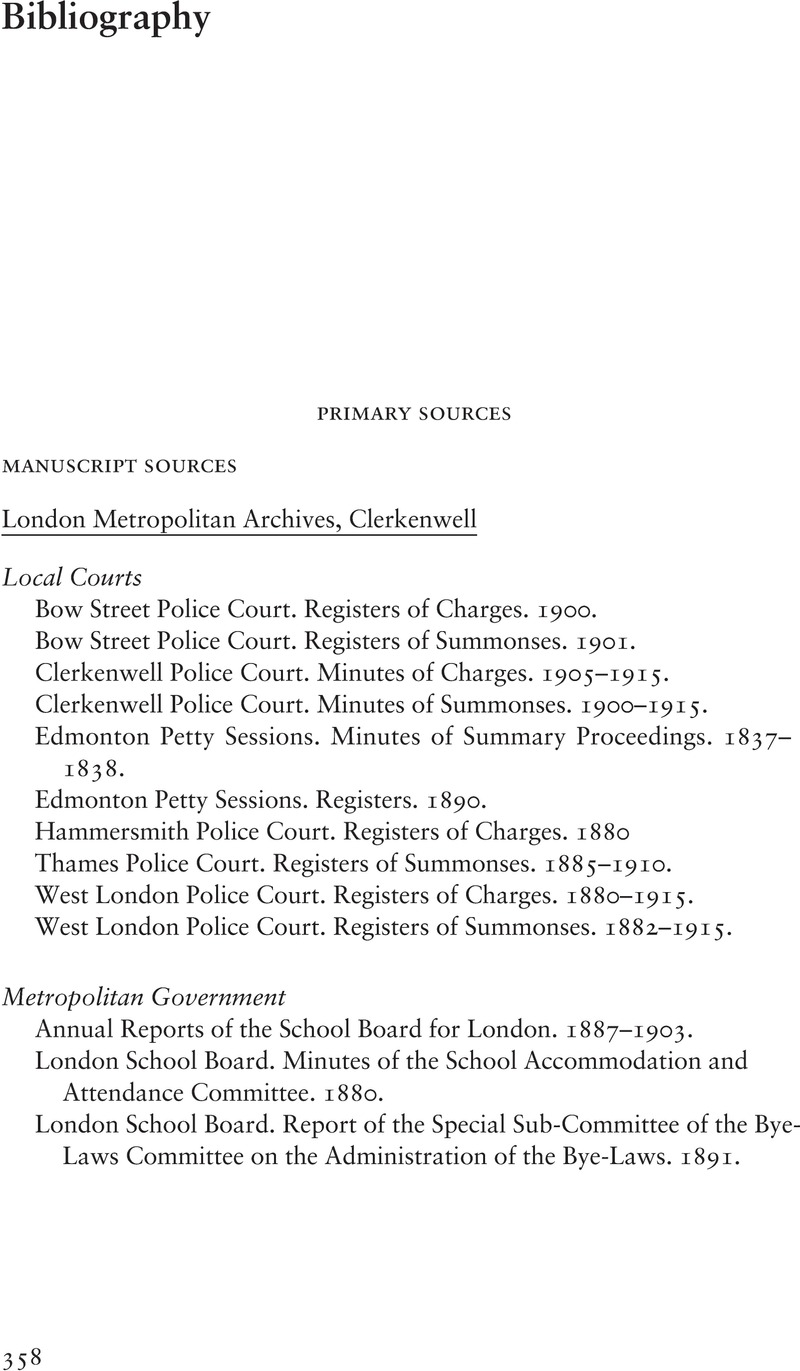Book contents
- Armed with Swords & Scales
- Studies in Legal History
- Armed with Swords & Scales
- Copyright page
- Dedication
- Epigraph
- Contents
- Figures
- Acknowledgments
- Glossary of Terms and Abbreviations
- Introduction
- 1 “Many-Coloured Scenes of Life”
- 2 “A Ruffian Rightly Punished”
- 3 “An Evil Quarter of an Hour about the Precincts”
- 4 “Two Shillings’ Worth of Revenge in the Form of a Summons”
- 5 A Poor Woman’s Court of Justice, 1882–1910
- 6 “The Very Centre of Observation and Information”
- Conclusion
- Bibliography
- Printed Primary Sources
- Secondary Sources
- Index
- References
Secondary Sources
Published online by Cambridge University Press: 05 February 2021
- Armed with Swords & Scales
- Studies in Legal History
- Armed with Swords & Scales
- Copyright page
- Dedication
- Epigraph
- Contents
- Figures
- Acknowledgments
- Glossary of Terms and Abbreviations
- Introduction
- 1 “Many-Coloured Scenes of Life”
- 2 “A Ruffian Rightly Punished”
- 3 “An Evil Quarter of an Hour about the Precincts”
- 4 “Two Shillings’ Worth of Revenge in the Form of a Summons”
- 5 A Poor Woman’s Court of Justice, 1882–1910
- 6 “The Very Centre of Observation and Information”
- Conclusion
- Bibliography
- Printed Primary Sources
- Secondary Sources
- Index
- References
Summary

- Type
- Chapter
- Information
- Armed with Sword and ScalesLaw, Culture, and Local Courtrooms in London, 1860–1913, pp. 364 - 381Publisher: Cambridge University PressPrint publication year: 2021



